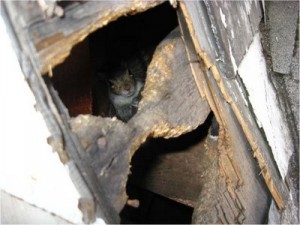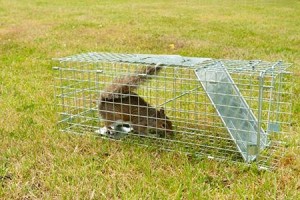Grey Squirrels Cause Serious Problems
November 8, 2012 by admin
Filed under Gardening, Home Maintenance, Pest Control
Their scientific name is Sciurus carolinensis.
They were introduced from USA /Canada to approximately 30 sites in England, Scotland and Wales from 1876–1930.
Grey squirrels do not appear to be susceptible to Squirrel pox virus, but may carry and transmit it.
Grey varieties eat seeds, buds, flowers, shoots, nuts, berries and fruit from many trees and shrubs. They also eat fungi and insects, and occasionally birds’ eggs and fledglings. They will strip bark from trees during the summer months.
- They store nuts in the ground in the autumn, but do not remember where they store them. They rely on scent to find them.
- The male and female are usually called a buck and doe.
- They can be right- or left-handed!
- They molt their coat twice a year, once after winter and then in the late summer before the weather gets colder again.
- They do not have ear tufts.
- They can live to 5-7 years of age.
- They have four fingers and five toes.
- The upper fur is mainly grey with mid-brown along the upper back, and chestnut over the flanks, limbs and feet. Their underside is white. The tail hairs are grey, banded with brown and black and a white fringe.
- They weigh 450-650g.
- Their body is 24–26cm long and their tail is 19-24cm in length.
- They live high in trees in a nest made from twigs, leaves and moss. This is called a drey. More recently they have taken to living and nesting in loft spaces.
- The drey may be in a hole in the tree or set against the trunk and branches.
- Pregnancy lasts 44 days and their young are called kittens.
- Kittens are born with their eyes closed, without teeth and with no hair. After about seven weeks they look just like small versions of their parents and are ready to leave the drey.
- There are generally 2 litters a year (rarely 3), with 3–7 kittens in each litter
- Average densities in broad leaf areas are approximately 8-18 greys per hectare, and 0.1-1 per hectare in coniferous areas.
- They do not hibernate over winter, but may be less active when weather conditions are bad.
- They can hang upside down!
- They can swim
Squirrel pox is a fatal disease currently affecting red squirrel populations in some areas. Epidemics of disease caused by an unidentified agent have been described in Britain since early last century. In the 1970’s Ian Keymer investigated causes of diseased red varieties in East Anglia and as a result of his work a pox virus was identified in eyelid lesions (Scott, Keymer & Labram, 1981). It is now certain that this pox virus is a significant factor in the decline
of the red squirrel population in the UK.
The origin of squirrel pox virus in red squirrels is the introduced American grey. Research shows that the antibodies to the virus are very common in many grey squirrel populations in England & Wales (although not in Scotland until recently – 13 greys have tested positive for antibodies since June 2005) but only one case of disease has been found in a grey.
Red squirrels are not found to carry the antibodies unless they are already succumbing to squirrel pox disease. It is therefore thought that grey squirrels act as a reservoir host for the virus. All wild-living red squirrels observed to be affected by squirrel pox virus appear to die within 2 weeks of becoming infected.
As yet we do not know the route of transmission. Possibilities include transfer via saliva or scent marking secretions at feeding or scent-marking sites, or perhaps by ectoparasites (fleas, lice, ticks and mites) which may transfer from animal to animal in the dreys. The virus is unlikely to spread through the air if it behaves like other pox viruses. Further research in this area is needed.
Live cage traps, either single or multi catch, involve attracting squirrels to a trap with a bait (food). These can be used in the same way as spring traps. Set at the base of trees and covered with logs. It is best to pre bait these traps, leaving the entrances open so that the squirrels can run freely for a few days before setting.
The density of traps required depends on whether single or multi- capture traps are used.
Single traps should be spaced 75-125m apart, multi traps 150-200m apart, equating to one trap per ha. In areas where it is difficult to draw squirrels to the ground – for example, pine mixtures, or where traps are disturbed by badgers, deer or wild boar – it may be necessary to site traps on platforms on the trees.
Captured squirrels should be humanely destroyed by guiding them to one end of the trap, where they can be killed with an air rifle or the traps can be emptied into a sack and the squirrels dispatched through a swift, heavy blow to the head. Non target species should be released immediately.


